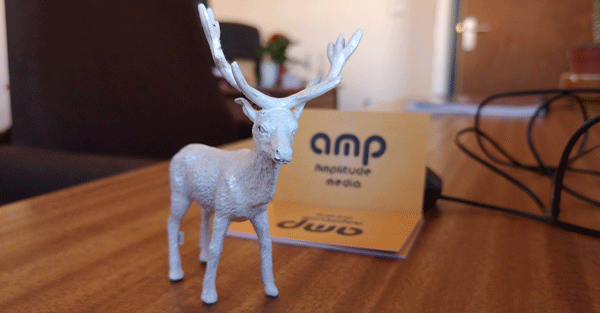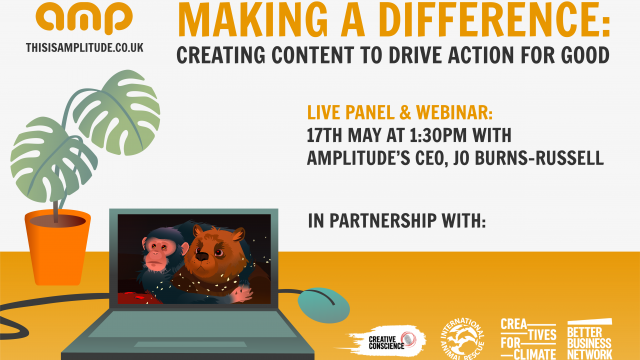Generating innovative creative concepts
Our last post on innovation gave tips on how to break free from repetitive thinking patterns. The post before that gave us a definition of innovation. This time we’re talking purely about generating innovative creative concepts. If you’re sat there with a blank sheet headed “marketing campaign” or “photo shoot ideas”, this is the post for you. Over the next few minutes, we’ll cover how to quickly generate dozens of ideas, then how to refine the best ones.
First thing’s first…
No matter how ridiculous something seems, write it down. You never know which bad ideas will lead to great ideas. Secondly, try to forget rules and limitations of your industry during the idea generation part of this exercise. Whenever you catch yourself thinking “We couldn’t do that because *insert reason*”, write down the idea anyway. There are no wrong answers here.
Now onto the fun part…
Generating innovative creative concepts
There are hundreds of ways you can generate creative concepts. Here are a few of our favourites. These are methods tried and tested by us, and some come recommended by industry experts like Lou Palfreyman Consulting.
Someone else’s shoes
Make a list of celebrities with diverse passions, opinions, and personalities. My list includes Alan Sugar, Ryan Reynolds, John Boyega, and Mary Berry. Once you’ve got your list of celebrities, put yourself in their shoes and imagine how they might approach things.
Using my list as an example, let’s imagine we’re making a car advert.
Alan Sugar is a straight-talking businessman, so his car advert might be similar. We see the car looking sleek and elegant against a static background. Motion graphics and a voice over highlight key features. Maybe we even put Alan Sugar in the car, talking directly to the viewer in his usual no-nonsense fashion. This might appeal more to older audiences.
What about Ryan Reynolds? His approach would be funny, slick, modern, and quite possibly action-packed and self-deprecating. It would be effortlessly stylish and might appeal to younger audiences.
John Boyega plays a major role in Star Wars movies. Maybe his advert would have some kind of franchise tie-in? Maybe he’d roll up to a red carpet event in our car? This would appeal most to fans of his movies, and to people who’d love to be in that line of work.
With Mary Berry you might get an advert that’s summery and friendly. Something showing off how comfortable the ride is; smooth enough not to topple a tiered cake sat in the boot. This might appeal more to the family audience.
Random Stimulus
Quick! Look left and write down the first six objects you see, then select one at random (roll a dice if you have one handy). This object is now your random stimulus, and it’s going to help in generating innovative creative concepts.
Take a closer look at your random object and write down as many of its attributes as you can think of. My randomly chosen object is a small deer model that sits on the office window sill, so my list might look like this:
- Small
- Painted white
- Male deer (buck)
- Antlers
- 4-legged
- Plastic rendering of an animal
- Standing still
- Symmetrical
Now try using these new words to spark new ideas. Using the car example again:
White makes me think of using a large, white studio. We could then talk about the beautiful simplicity of the vehicle’s features. “We don’t need frills to sell our product”.
Plastic rendering of an animal and small make me think about an advert that plays with perspective. We could have a life-size car moving amongst tiny plastic models of people, houses, and nature. We could make clever use of perspective and editing trickery to make the plastic models look the right size next to the car.
Male deer and antlers might suggest that we take the car out to woodland roads, focusing on the eco aspect of its engine and its fuel consumption.
Unlikely Pairing
Our next tip for generating innovative creative concepts begins with writing down twenty attributes of the product or service you’re selling or promoting. My list for the car looks like this:
| Fast | Safe | Sleek | Fuel efficient | Built-in radio |
| Custom colours | Environmentally friendly | Too small for families | Great for one or two passengers | Recognisable brand |
| Unleaded petrol | Alloy wheels | Cheap to tax | New model | Convenient |
| Heated seats | Heated windscreen | Good in all weather | Parking sensors | Comfortable |
Now pair attributes together and write down the ideas you come up with.
A blend of recognisable brand and custom colours might lead you to a campaign focusing on how the long-standing brand is leaving greys and silvers behind, leaping into the modern age with a range of bright colours.
Heated windscreen and convenient might lead you to focus on how quick the car is to get going, even in the frosty depths of winter.
A campaign on how well you fit the car, and how well the car fits in parking spaces might come from parking sensors and comfortable. “A great fit for you, a great fit for life.”
What next?
If you’ve been generating innovative creative concepts with me using the exercises above, odds are you’ve got a bunch of ideas written down. Now go back through your list and see whether anything on the list sparks even more ideas. Maybe getting Alan Sugar in the car isn’t feasible, but what about an actor playing an Alan Sugar-like character? A Star Wars tie-in might be well beyond your budget, but what about a sci-fi theme?
Selecting and refining the best creative concepts
You should now have a list of great, good, bad, and terrible ideas. Some of these you’ll be able to get rid of immediately. Maybe self-deprecating humour would never work for your brand, or perhaps your product has absolutely nothing to do with nature.
Once you’ve removed the obvious ones, whittling down the rest can be a bit trickier. Here’s when you might want to take a look around the market at what has and hasn’t worked before. Try to figure out why something did or didn’t work, and if a reaction was particularly good or bad, use this to inform your decision making.
You’ve now knocked your list of dozens down to just a handful, so it’s time to refine your ideas. Choose one, make a prototype or mock-up, show the idea to others, let them experience it and give you feedback. They might see problems you couldn’t, or suggest genuinely useful improvements. If it becomes clear that your idea has reached a dead end, you’ve still got a list of ideas to fall back on, plus new knowledge about why the idea failed.






